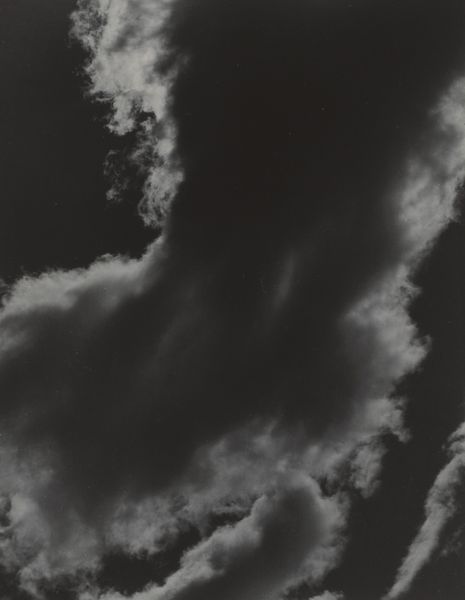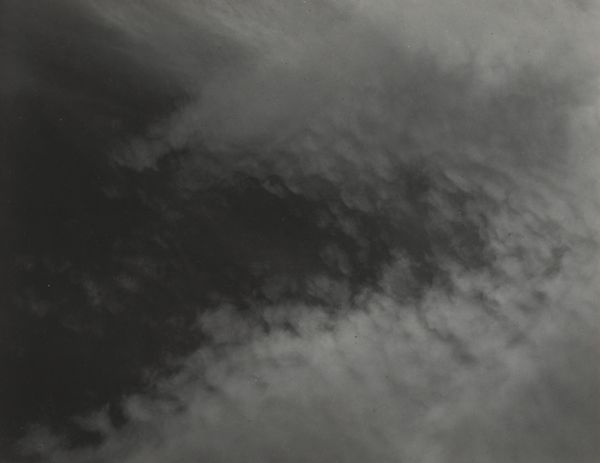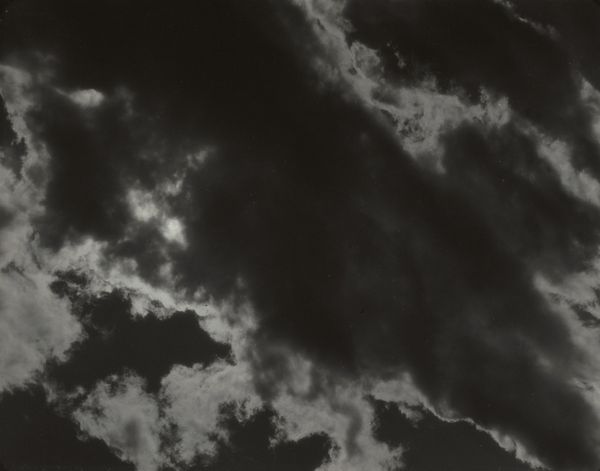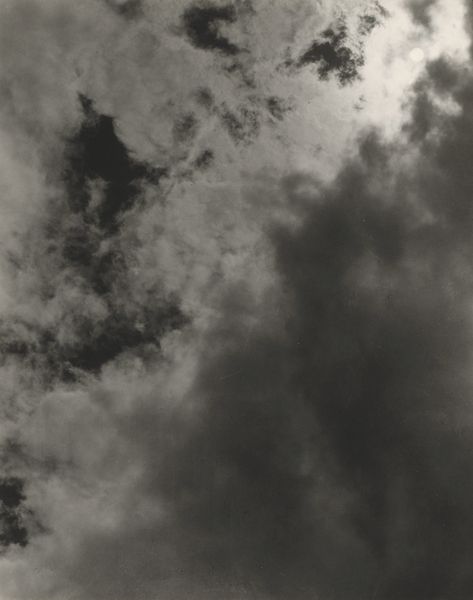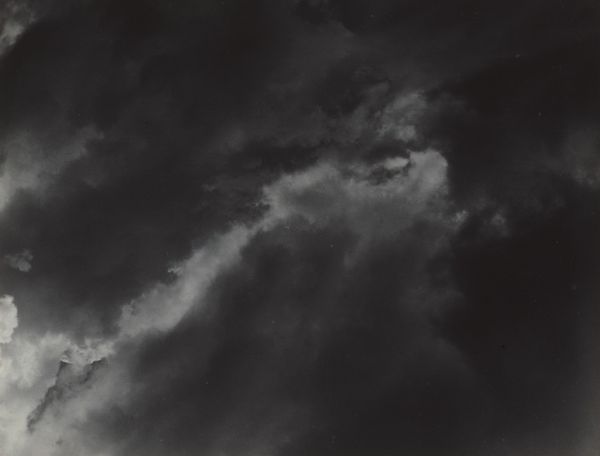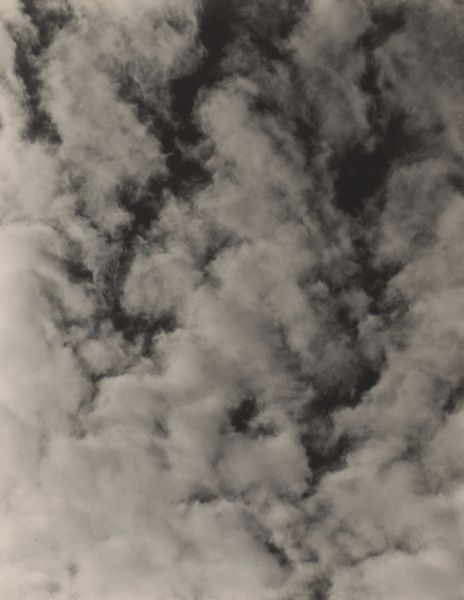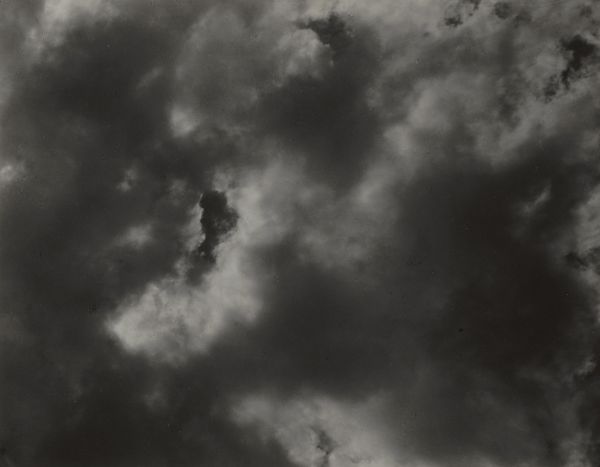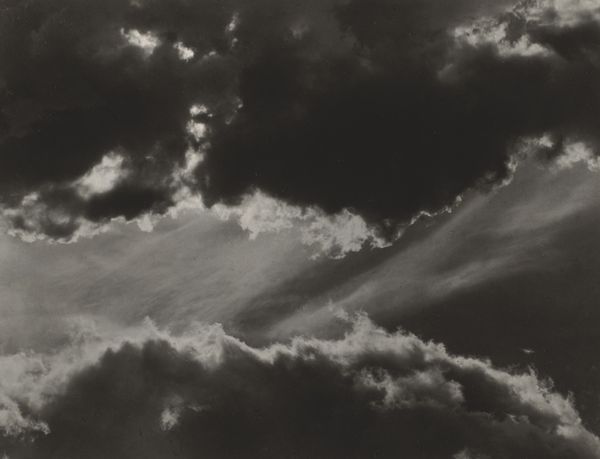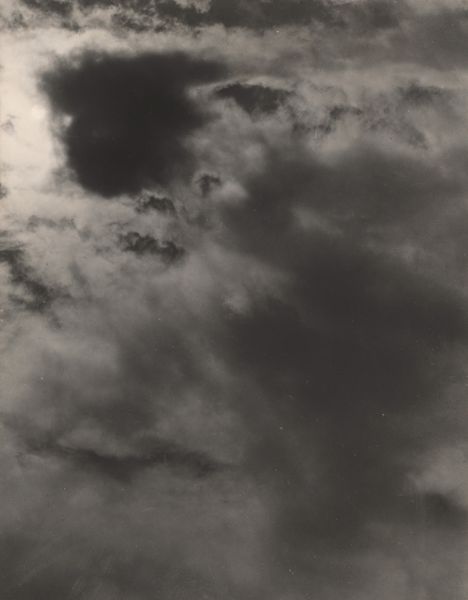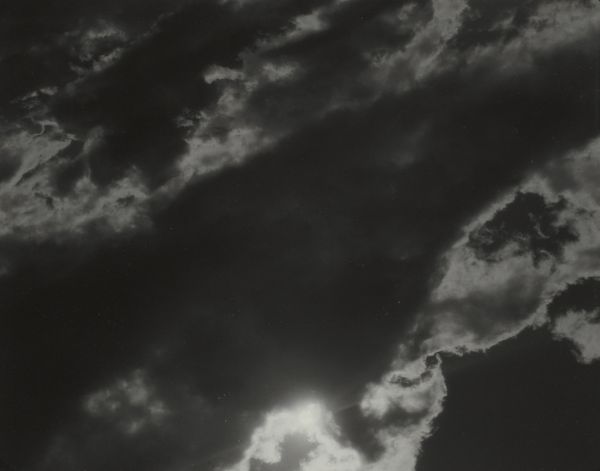
print, photography
#
cloudy
#
black and white photography
#
snowscape
#
pictorialism
# print
#
landscape
#
photography
#
low atmospheric-weather contrast
#
monochrome photography
#
gloomy
#
fog
#
abstraction
#
monochrome
#
modernism
#
mist
#
monochrome
#
shadow overcast
Dimensions: sheet (trimmed to image): 9.3 x 11.8 cm (3 11/16 x 4 5/8 in.) mount: 34.2 x 27.7 cm (13 7/16 x 10 7/8 in.)
Copyright: National Gallery of Art: CC0 1.0
Curator: It feels heavy, almost oppressive, doesn't it? So much dark tonality. Editor: We're looking at "Songs of the Sky or Equivalent," a photograph by Alfred Stieglitz, made sometime between 1923 and 1929. This series holds significant importance as Stieglitz sought to find equivalents to his own emotions through natural forms. Curator: Equivalents... fascinating. Considering his rocky relationship with Georgia O'Keeffe during that period, I can't help but interpret these skies as expressions of inner turmoil. The clouds become a metaphor for the volatility and fleeting nature of human emotion and relationships. Editor: A potent interpretation, absolutely. And visually, the composition strikes me as profoundly considered. Notice how the stark contrast between the solid blacks and feathery whites creates a dramatic tension. The interplay of forms becomes a self-contained system of dynamic oppositions. It functions, on a fundamental level, as pure abstraction. Curator: I agree it anticipates abstraction, but it's never detached from its social or personal reality. The "Equivalents" series came about when Stieglitz felt criticism that his work was always attached to his name, his story, and that of O'Keeffe. This became Stieglitz's means to an end, because with each piece of art that exists, it is often linked to identity. It attempts to show the pure idea while knowing nothing can exist on its own, which is still so impactful today! Editor: Well said. I wonder, then, if Stieglitz considered that by obscuring explicit references, he wasn't so much liberating the art as much as transferring the labor of interpretation onto the viewer? Curator: Perhaps. But that’s precisely the point, isn't it? To encourage the viewer to find their own equivalents, their own meanings. It becomes a deeply subjective experience and acknowledges the many levels of context that one can connect with depending on the viewer. Editor: A beautiful sentiment and yet I keep returning to the elegance of that tonality, so precisely calibrated as pure experience of seeing. Thank you for sharing your thoughts. Curator: My pleasure, thank you for focusing my perspective, as well.
Comments
No comments
Be the first to comment and join the conversation on the ultimate creative platform.
